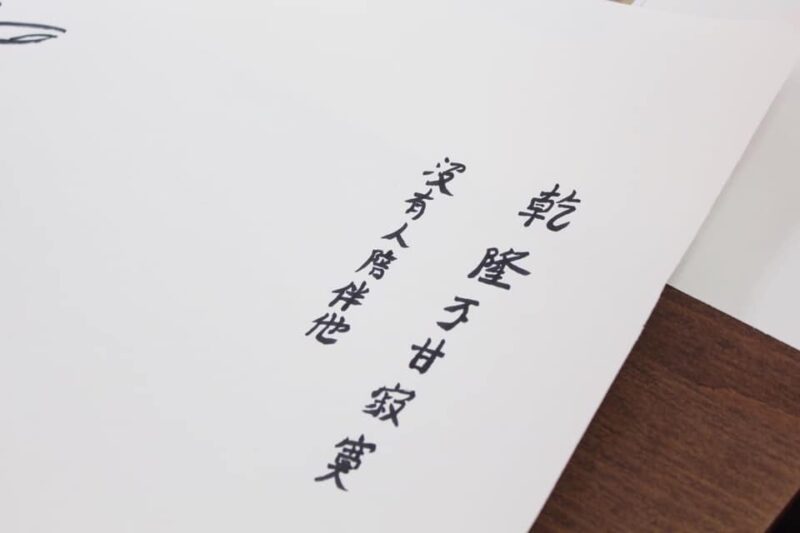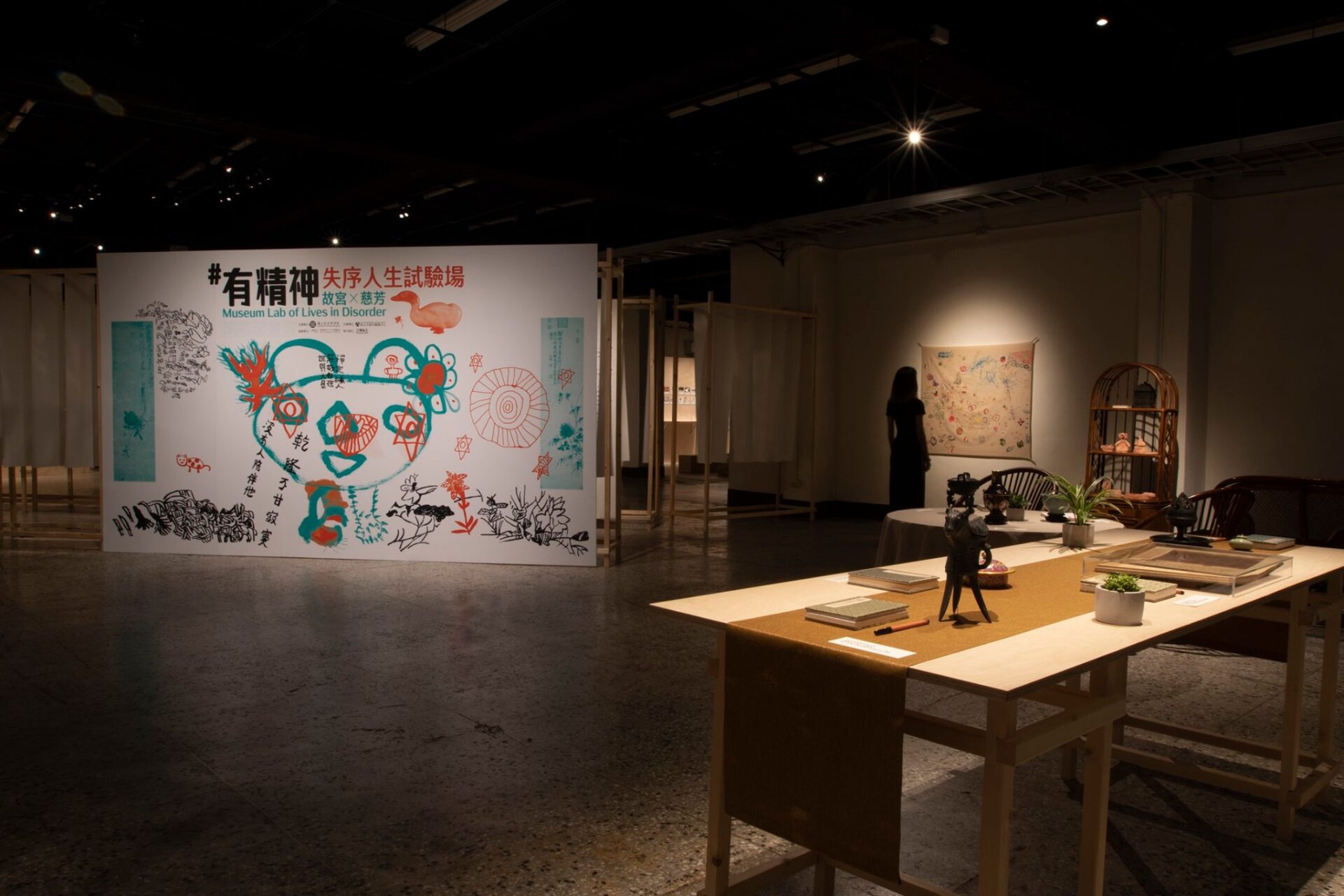【Museums Link Asia-Pacific】The Therapeutic Power of Museums – How National Palace Museum Shortens the Distance with Mentally Challenged Individuals
“Museum Lab of Lives in Disorder” is an inclusive museum exhibition directed by the National Palace Museum, collaborated with mentally challenged individuals. The Art Care Project is a preparation course for the exhibition. (source: “Museum Lab of Lives in Disorder” Facebook fan page, https://reurl.cc/r8vglr)
Author:
Wu, Yueh-Wen (Graduate student, Graduate School of Arts Management and Cultural Policy, National Taiwan University of Arts)
Yu, Min-Ning (The leader of Art Care Project in the National Palace Museum)
“The Art Care Project” is an inclusive museum project directed by Department of Education, Exhibition and Information Services in the National Palace Museum from 2016. The project focuses on the economically disadvantaged, the public seldom visiting museums and seldom served by museums in recent years. Considering the three groups, National Palace Museum is cooperated with civil organizations, and gathers “interdisciplinary” professionals, such as art therapists or drama therapists for different organizations to plan various programs, and try to deliver museum resources to target groups in more various ways. The main point of “The Art Care Project” tries to introduce history to target groups’ daily life with cultural artifacts, and hopes to build the intertextuality between cultural artifacts and the public from target groups’ perspectives once again. In this article, it presents an example which shows an education promotion program implemented by “The Art Care Project” work team and Easy Clubhouse (Cih-Fang). The program shares how museum education personnel design and operate these interdisciplinary programs, and how target groups extend their life history, and start dialogues with the ancients and the cultural artifacts.
Keywords: cultural accessibility, art therapy, healing power, cultural artifacts, daily life
From April 2019, “The Art Care Project” and “Easy Clubhouse (Cih-Fang)” at Tucheng worked together to carry out a series of workshops for making the connection between the National Palace Museum and the mentally challenged individuals (participants) who seldom visit the museum. This series of workshops invited a professional art therapist from interdisciplinary fields to plan and perform 20 classes of theme-based group course, divided into 4 parts: “cultural artifact observation and handling”, “experiences of replicating cultural artifacts”, “art making” and “sharing your feelings.” From the historical texture of cultural artifacts to the current life status, that will lead the participants to understand themselves step by step.
How can history extend to current life?
The first part “cultural artifact observation and handling” takes around 20 minutes, led and designed by the educational personnel in the National Palace Museum with theme-based models. The idea of the courses is from daily life and gradually brings it into context with historical artifacts. For example, the first class “wow! how cute the bronze scripts are” is designed to let participants recognize their names and families, and rebuild the identities in consideration of the ancient family and tribe crest in Shang dynasty. When the participants and personnel build trust, it’s time to move on to the next level with profound topic. “The precious to the deceased” is the course to bring up issues of death, eternity and blessing from ancient grave goods, making participants ponder how to face the end of life and also the blessing and the commitment to oneself or beloved ones. No matter the topic is easy or uneasy, the course is designed to proceed with simple words, cases and oral interpretations. Therefore, the most important point in the whole process is to focus on creating an interactive space without pressure.
Experience the replicated cultural artifacts through 5 senses
It takes around 10 minutes to proceed the second part “experiences of replicating cultural artifacts”, deriving from the theme “cultural artifact observation and handling.” The personnel will select some replicated artifacts to provide the practical experiences to the participants and emphasize their daily practicality. Different from art works being displayed in the cabinet, it will have them really understand the usage and also the meaning of these artifacts, shortening the distance between the mentally challenged individuals and the museum. In the process of the second part, participants not only can experience with their sight and touch but also with smelling and hearing. For example, when the personnel introduce the replica of a pillow in the shape of a recumbent child with white glaze, Northern Song dynasty, they would encourage participants to lie down and everyone would be amazed by how comfortable it is. Moreover, in the part of grave goods, the personnel also bring out the replica of Po-Shan-Lu Incense Buener of the Han dynasty. Some people suggest putting spices to incense; afterwards, the smell of mug wort often fills the air, healing all the moody faces. “Experiences of replicating cultural artifacts” helps to make connection between objects and people with the most direct interaction and encourage people to think outside the box and connect these artifacts to their daily lives.

Time travel of art
It takes around 90 minutes for the third part “art making”, based on the context of “cultural artifact observation and handling” and mainly led by the professional art therapist. The personnel will provide relative materials for participants to work on. For example, in one group course, the art therapist designs a food creation workshop with artifacts, such as Jadeite Cabbage, Jade Duck and Meat-Shaped Stone etc., and provided various materials like food, discarded vegetables and fruits, acrylic colors, watercolor and ink etc. In the process, people will feel the texture and structure of foods and use their characteristics to create, even with the most natural material “juice”, experiencing the sense of “touch”, “smell” and “sight.” The therapist will guide the participants to ask: “Why do the ancient artisans make artifacts like food? and what is the difference when people touch real food and artifacts?” A participant answered: “I think it’s the performance of life. Even though the artifacts look like foods, they can last forever,” which quite accurately responds our core concept of the group courses, that is, food is a symbol of life, and it will never change the way it looks as time goes by. Participants will start to believe that these cultural artifacts are close to their lives. Besides, although art therapists are considered as professional coordinators, they are not limited in only one method. They often adjust themselves according to different organizations and cases instead, improving the degree of freedom in creating.
Understanding, communicating, feeling
“Sharing your feelings” is the fourth part of the courses, and the art therapist will rewind back from “cultural artifact observation and handling” to “art making” and encourage participants to share their feelings: “We always see ancient works in the class, perhaps we can send our works to them to take a look?”, “Qianlong Emperor must be very lonely since no one is with him”, “Qianlong Emperor loves Empress Xiaoxian as much as my boyfriend loves me.” After knowing every cultural artifact and learning their creators, the participants can relate their daily lives to these artifacts strongly. The course of “sharing your feelings” is a platform for participants to communicate and look closely to the process of learning and creating. I tend to explain the self-deconstruction with the foreword of Art is My Comfort written by Hsieh, Pei-Ning: “From birth to death, artists and us all lives the same life in certainty and uncertainty; however, the only difference is that the artists choose to convey their ideas through creation and combine their hearts and minds together to make various works. Witness the common destiny of humankind and search for universal, harmony and connection from sharing.”

Shortening the distance between cultural artifacts and us
Recently, the museums have advocated the notions of “social inclusion” and “cultural accessibility”, and many museums also use “art therapy” as a method to communicate with mentally challenged individuals. As art therapists go forward with the museum courses in the role as professional coordinators, they bring interdisciplinary thinking and experiences into the courses, and emphasize the “accompany” and the “process” in the courses instead of the results at the end of the courses. In the process, participants will boost self-identification and self-confidence. At the meantime, “The Art Caring Project” also displays the characteristics of collections in the National Palace Museum, linking the context of artifacts and stories of creators to life experience of participants, trying to shorten the distance in hearts. It transforms cultural artifacts with high historical and artistic value into daily objects, and makes vivid presentation of ancient people’s personality and connections. Based on their stories, participants can think of their life context with accessible and healing objects.
References:
- 李沼泳(2018)。療癒美術館:用名畫治癒心靈,在美的世界找到更好的自己。時報出版
- Facebook#有精神-故宮與失序人生試驗場
- 國立故宮博物院全台文化平權巡迴講座資訊一覽
- official website: Museum Lab of Lives in Disorder

